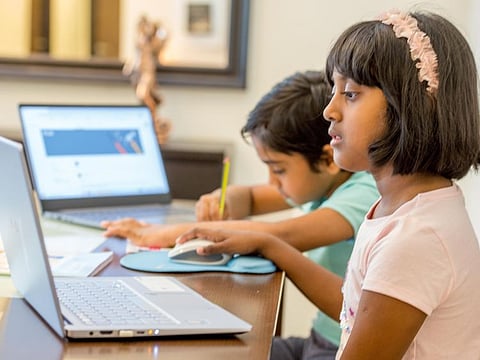UAE educators get creative to teach hands-on subjects remotely
Ideas include using everyday objects for art or recording themselves exercising

Dubai: Instead of suspending subjects that are challenging to teach online, such as lab experiments, arts or PE, UAE teachers are improvising ways to keep students engaged throughout the e-learning phase as classrooms remain closed because of the coronavirus pandemic.
At Swiss International Scientific School in Dubai (SISD), teachers are combining creativity and technology to ensure hands-on or practical subjects continue over this e-learning phase.
SISD arts teacher Alexandra Williams said students are being “resourceful” at home in using ordinary items as art materials.
Eye of the beholder

“In essence, the skill development can still be built, but the application processes will be limited to basic resources – the same resources that master artists and performers have been using for centuries.”
Experimental idea
Charles Cejka, science coordinator at SISD, said teachers or lab technicians plan to film themselves conducting experiments and post the video on the school e-learning platform. In the “worst-case scenario” where they cannot access the materials or equipment, teachers will post a pre-recorded video from YouTube about the experiment.

Fine tuning
SISD music teacher Joachim Beyer the process has been “fairly easy to adapt” as students had already been using software to compose music for their e-portfolio.

Getting physical
Even PE (Physical Education) teachers are hopping on the digital bandwagon to deliver customised content for students.
Dr Daniel Doyle, Head of School/Vice Principal of GEMS FirstPoint School, The Villa, said instead of relying on generic workout videos on social media, the school’s PE team “worked tirelessly” to create year-group-specific lessons, each of which includes a workout, nutrition advice, and physical exercise theory.
Students then are required to upload their reflections and the videos of their workouts for feedback. Teachers and leaders review the work and look at how to provide specific challenges for groups of pupils.
There are also whole-school challenges. For example, each student has their own folder where they have a heart-rate tracker, health diary and a place to store their challenge outcomes – this week it is how many push-ups they can complete in a set time.

Blurring the boundaries
Teachers of different subjects are also working together to create new content across disciplines to counter the limitations of remote learning, said Chitra Raghavan, Vice Principal, DPS Sharjah. For example, art students will design the ads that will complement the business writing composed by English class students – or vice versa.
“We have also launched a live blog with a white-screen for best practices where teachers share their successful experiences, so students ultimately benefit from innovative approaches to learning, which are needed more than ever now,” said Raghavan.
Sign up for the Daily Briefing
Get the latest news and updates straight to your inbox





